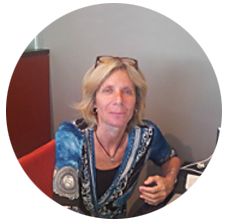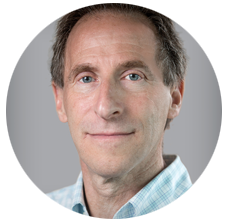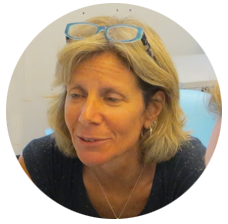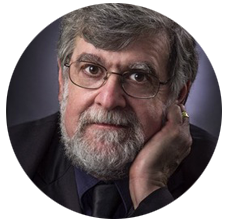By Abigail Skelton, Bulletin Staff

‘There are about 100 (nonprofit news sites) nationally … six or seven focus exclusively on health-related reporting.’
— Lisa Chedekel, Co-founder and senior writer,
Connecticut Health Investigative Team (C-HIT)
With the decrease in print circulation of newspapers, there has been a noticeable change in the way much of our news is reported, according to representatives of two online niche publications that are part of that change.
Some of the change can be explained by an increase in singularly focused news sites, including two health-focused sites, known as STAT and C-HIT, said Lisa Chedekel, co-founder of C-HIT.
“I think there was a mutual recognition (in the news media) that health and science reporting was vastly under-covered,” said Gideon Gil, managing editor for enterprise and partnerships at STAT News.
STAT News is one of many new niche news sites that have become common in recent years. STAT was begun as an experiment by the owner of The Boston Globe, John Henry, Gil said.
“When John Henry purchased the Globe, he was interested in how he could make quality journalism financially stable in today’s climate,” Gil said.
Two sites Henry established were STAT and Crux, a site focused solely on the Roman Catholic Church. Crux was shuttered in March, just 18 months after it was launched, because it was unable to sustain its coverage through advertising revenue.
Gil said Henry recognized that a niche operation such as STAT must be “best in class” to be successful.
Part of STAT’s success comes from location, Gil said.
“It is our location that allows it; Boston is the hub (of health and science reporting). If Paris was the hub, STAT would not be as successful as it is,” Gil said.
STAT is not the only singularly focused news site founded in recent years.
Lisa Chedekel and Lynne DeLucia, both formerly of The Hartford (Conn.) Courant, launched the Connecticut Health Investigative Team, known as C-HIT.
Chedekel said the main purpose of C-HIT is to fill the void in health-related reporting in Connecticut that stemmed from cuts in newspaper and television newsrooms.
“We were acutely aware of some cuts …Veteran reporters were leaving their newspapers,” Chedekel said.
Over time, the health reporting staff of the Courant had decreased from six journalists to two.
C-HIT focuses mostly on investigative reporting on systemic health problems, with more limited coverage of the policy side of health-related reporting, Chedekel said. She said the goal of C-HIT is to act as a database of knowledge for consumers to find up-to-date information from regulatory agencies with ease and without bias.
C-HIT and STAT have been growing, Chedekel and Gil said about their sites. Both said they recognize that they are not alone in their work, but that their work is still important.
STAT’s multimedia team is now nine people, which is a quarter of its entire editorial team, Gil said.
“Most newspapers don’t have that (level of focus) on multimedia … It’s a large team,” Gil said.
Chedekel said C-HIT relies on a pool of about a dozen freelancers to produce its content, with DeLucia as the only full-time employee.
Like Chedekel, Gil noticed cuts being made to a team of health reporters at the Boston Globe before his departure. Gil took a leave of absence from the Globe, where he was a health and science editor, to complete a Knight Science Journalism Fellowship at the Massachusetts Institute of Technology.
When it came to returning to journalism, Gil wanted something new. He joined STAT in June 2015 and has watched it grow and change during the past year. STAT has been growing both in size and scope of coverage, Gil said.
“There was a flurry of other sites (in the United States), expanding and adding (to their health and science) coverage … ,” Gil said.
Gil said STAT has been increasing its reach and audience by hiring reporters from around the United States. About 20 percent of STAT readers live abroad, he said.
To extend its reach, STAT shares content with the Boston Globe; many stories posted by STAT are also published in the Globe, and vice versa.
Every Wednesday, a reporter from STAT is featured on WBUR’s “Here and Now” radio program, broadcast on NPR.
Chedekel said C-HIT also uses content sharing to expand its reach.
Besides publishing content on the C-HIT website, “we supply content to 17 newspapers … Our stories reach 1.2 million readers on average,” Chedekel said. C-HIT is financed by a combination of content sales, which also extends the reach of C-HIT’s content, and national and local grant money, Chedekel said.
“We have no shortage of stories … The issue is making money,” Chedekel said.
Gil noted that STAT is one of several sites, such as C-HIT, that is focused solely on health-related reporting.
Chedekel said that she also realizes that C-HIT is not alone.
“There are about 100 (nonprofit news sites) nationally … Six or seven focus exclusively on health-related reporting.” Chedekel said.
Sites such as STAT and C-HIT have responded to cuts in health-related reporting.
But there is a question as to why cuts were made to that area of news coverage in the first place.
There are many possible factors, not the least of which is the overall decline in print circulation for newspapers, but Jerry Berger thinks that the cuts can be attributed to a shift in the focus of the news media.
Berger is a strategic communications professional and former director of media relations at Beth Israel Deaconess Medical Center in Boston.
There are two distinct categories of health-related reporting, Berger said.
“There is science and health reporting … and there is the business of health care.” Berger said.
Coverage has shifted toward the business of health care, likely because of the federal Affordable Care Act of 2013, more commonly known as Obamacare, Berger said.
By its nature, Obamacare changed the focus of health-related reporting. The introduction of Obamacare has led to an increase in coverage of the business of health care. The business of health care can now be adeptly covered by government, economy, and business reporters, as April Burbank has been assigned to do.
Burbank is a reporter for The Burlington (Vt.) Free Press and has been a journalist for just a few years. Burbank focuses primarily on state government and policy trends and through that lens covers a lot of health-related news as well.
“(Health care) isn’t my primary focus, but in covering state government and policy trends, I spend a decent amount of time on health care,” she said.
“A lot of (my coverage) has been policy-focused … absorbed by the Affordable Care Act and Vermont Health Connect,” she said.
Vermont Health Connect is an online health care portal for Vermont, similar to the online portals for Obamacare.
“Health care policy is such a complex topic to cover — now with the added level of controversy over Obamacare health exchanges like Vermont Health Connect — that it’s just difficult for reporters to find the time to write about actual medicine through stories on the ground,” Burbank said.
“Covering policy is essential to government accountability… but I wish there was more time for feature pieces and (personal narrative stories),” Burbank said.
Chedekel, Gil and Berger all discussed the decrease in reporters with a primary beat of health-related reporting while also noting the increase in stories on the policy of health care.
They said the outlook for health-related reporting is not as concerning as it once was. The overall decline in print circulation and cuts in the newsroom have been mitigated by single-focused news sites such as C-HIT and STAT, Gil said.

‘Health care policy is such a complex topic to cover — now with the added level of controversyover Obamacare health exchanges like Vermont Health Connect — that it’s just difficult for reporters to find the time to write about actual medicine through stories on the ground.’
–April Burbank, Reporter
Burlington (Vt.) Free Press

‘It is our location that allows it; Boston is the hub (of health and science reporting). If Paris was the hub, STAT would not be as successful as it is.’
–Gideon Gil, Managing editor for enterprise and partnerships
STAT News

‘We have no shortage of stories … The issue is making money.’
–Lisa Chedekel

‘There is science and health reporting … and there is the business of health care.’
–Jerry Berger, Strategic communications professional
